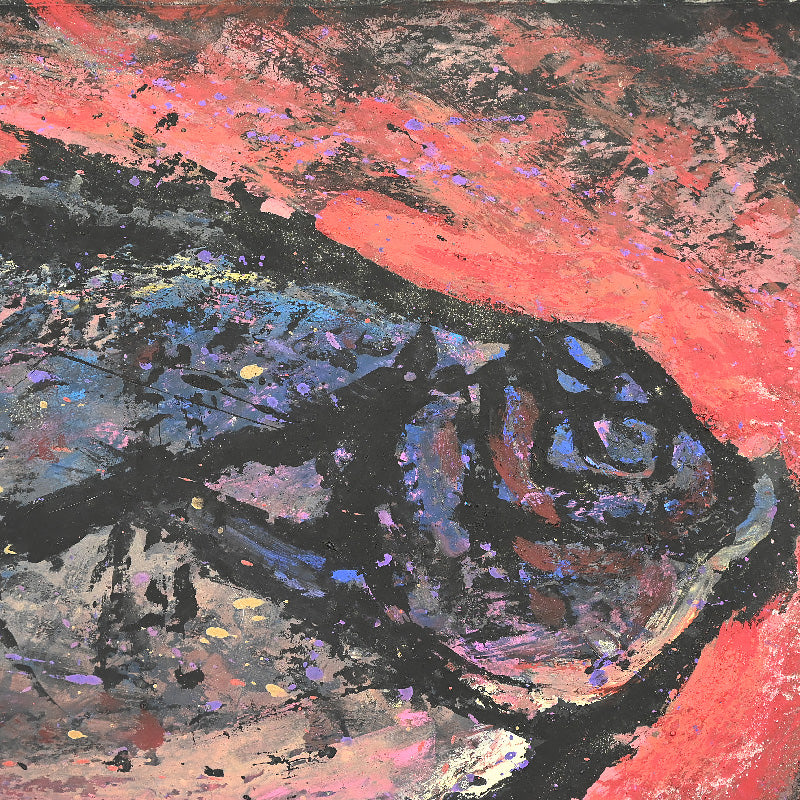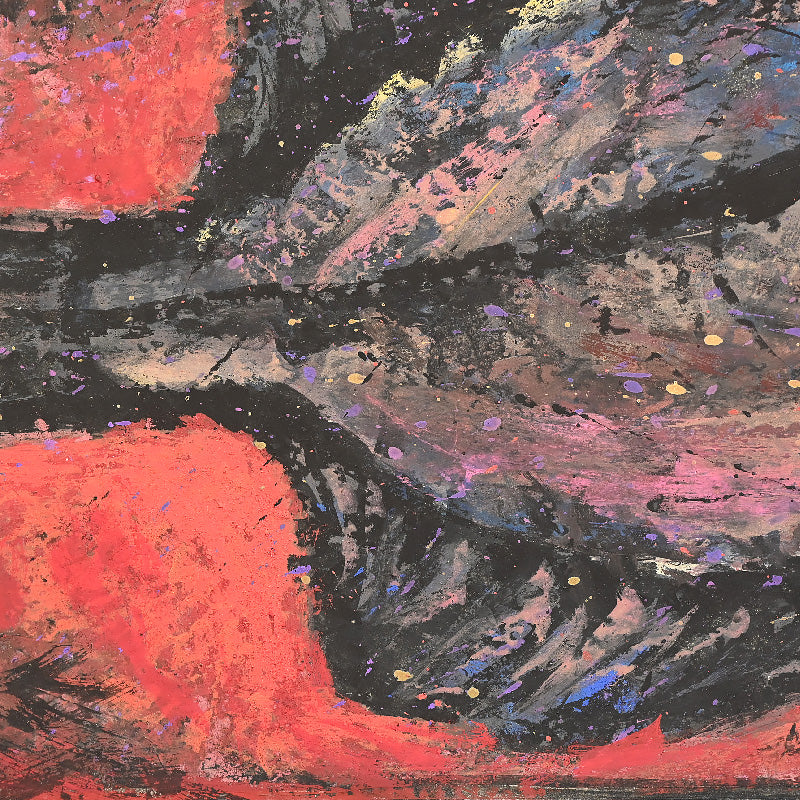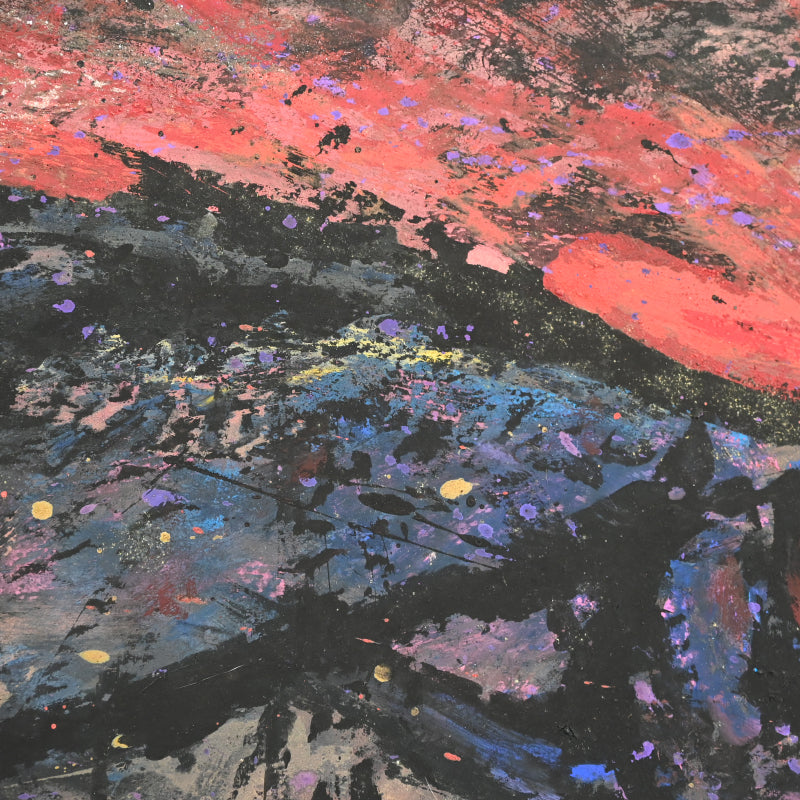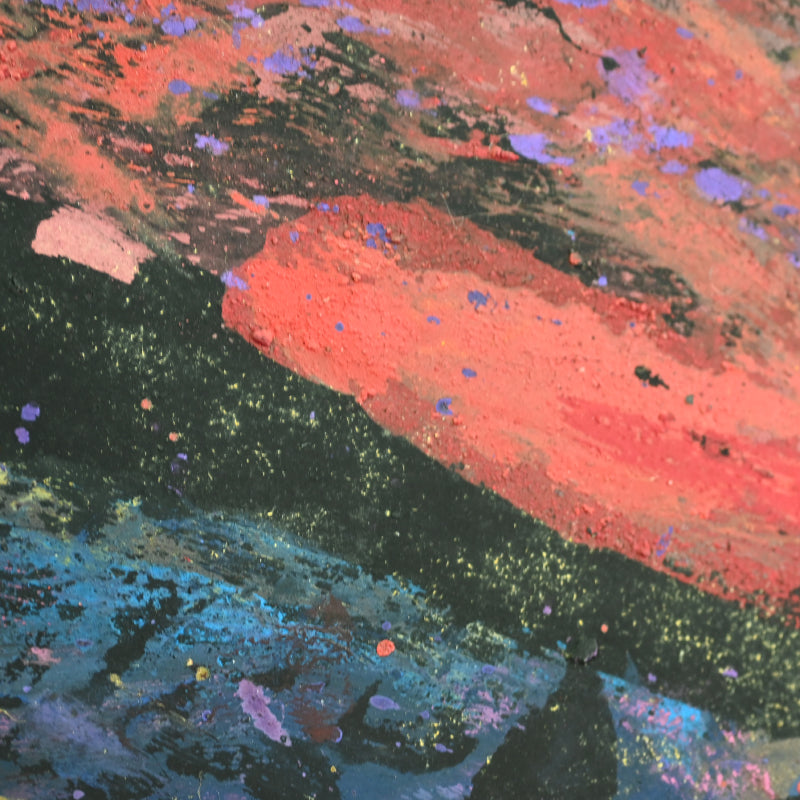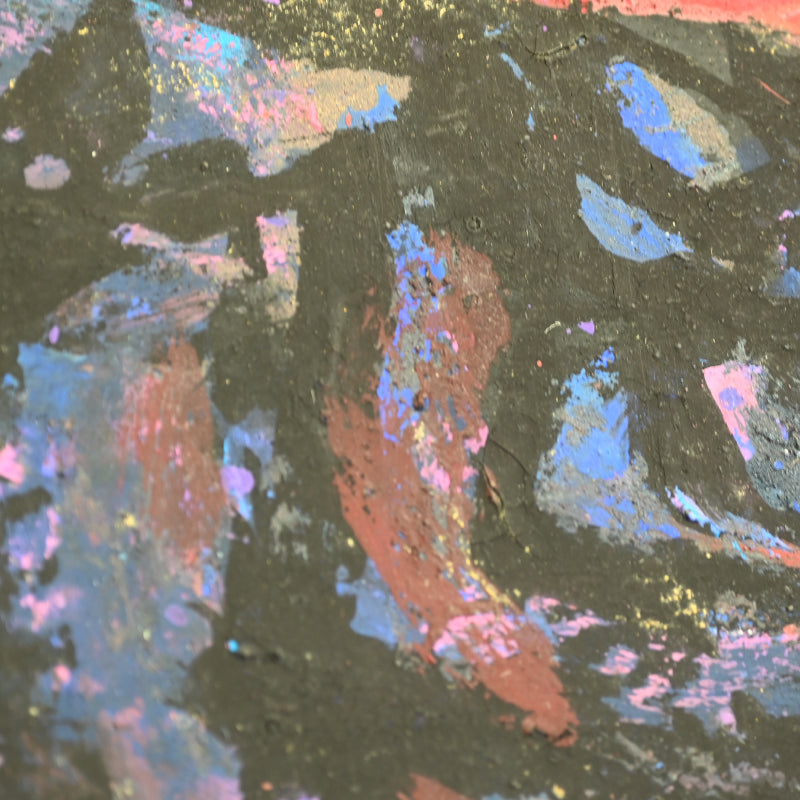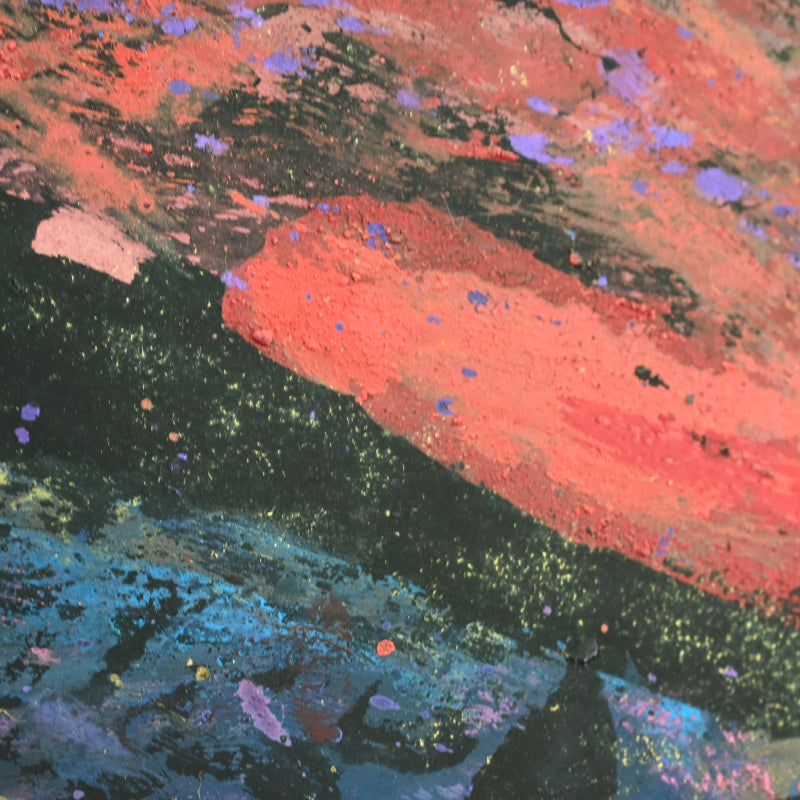Frantic Framed Nihonga Painting of a Flounder ーのむら 清六 "カレイ図"
Frantic Framed Nihonga Painting of a Flounder ーのむら 清六 "カレイ図"
Item Code: NS2
Couldn't load pickup availability
Red and black dominate this work by Nomura Seiroku mounted in the original period wooden frame. Although this looks similar to oil painting, it is in fact mineral pigment on paper mounted on a panel in the traditional Nihonga style. The painting itself is 33.5×45.5 cm (13-1/4 x 18 inches), with the frame it is 49.5×61.5×4.5,cm (19-1/2 x 24 x 2 inches) and is in overall excellent condtion, with some insignificant chips on the edges of the frame.
Nomura Seiroku was born in 1916 as the fourth son of a farming family in Yamanashi Prefecture. During his childhood, he was entrusted to relatives and spent his time drawing late into the night while working at a cotton mill. At the age of 17, he persuaded his parents and relatives to let him move to Tokyo, where he took on various jobs while attending the night school at Kawabata Art Academy where he formed lifelong friendships with other painters such as Iwasaki Hajin, Komatsu Hitoshi, and Taniguchi Sango. He sought mastery of the Tsuketate technique. which involves using a rough brush held vertically to create a strong brushstroke that carves the framework of the painting without sketching. In 1943, Seiroku was drafted into the Yokosuka Navy. Around the same time, he married Tokiko Nomura, a daughter from an old family in Komatsu City, Ishikawa Prefecture, whom he had met during his art school days. As a result, he adopted the Nomura surname. In the early years of their marriage, Seiroku had little income, so in 1951, at the age of 35, he made a decisive move to focus on his artistic direction. He left his family and relocated to a cabin by Shibireko Lake in Yamanaka, Yamanashi Prefecture. There, he spent four ascetic years perfecting his "Tsuketate" technique. During this period, Nomura began creating cover illustrations for the haiku magazine "Kira" and held his first solo exhibition in Yamanashi Prefecture. He also showcased his works at various exhibitions, including the Shinseisaku Art Society Exhibition and the Japan Independent Exhibition. In 1955, after returning to his family in Komatsu City, he moved his studio to Kashiwa City, Chiba Prefecture, to facilitate exhibitions and negotiations with art dealers in Tokyo. In the 1960s, Nomura produced outstanding works using flat and thick painting techniques. From the 1970s onwards, his brushwork became freer and more spontaneous, and he began incorporating his own haiku into his paintings, evolving towards a more literati painting style. Work by him is held in the Tokyo National Museum of Modern Art, the Wakayama Prefectural Museum of Art and the Yamanashi Prefectural Museum of Art where a major retrospective was held in 2000.
Share




